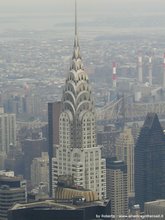Read original...
PATH that skirts the Lake Tappan Reservoir in River Vale was silent but for calls from a flotilla of Canada geese and a team of birdwatchers’ footfalls as they cracked the runner of ice-encrusted snow.
Suddenly, a voice broke the chill morning hush.
“Shrike!” announced Kenneth Witkowski of Hardyston, the team leader. His fellow birders swarmed around his tripod-perched spotting scope, sharing the moment.
The predatory shrike, also known as the “butcher bird,” along with a bounty of about a dozen adult and immature American bald eagles, hundreds of svelte merganser ducks, a lone robin, and a few herons were among the many birds spotted that Saturday morning in Bergen County.
While the group of five recorded their sightings, other birders throughout the nation were doing the same as part of the National Audubon Society’s 108th annual Christmas bird count. The count was established on Dec. 25, 1900, by Frank M. Chapman, a curator of ornithology at the American Museum of Natural History. His intent was to track and tally the birds, not hunt them. Twenty-five counters were dispatched to 27 locations across the United States, including parts of Englewood, Moorestown and Newfield. Those original observers counted a total of 90 species.
Today, there are 11 Audubon chapters in Connecticut, 5 in New Jersey, 5 in Westchester County and 7 on Long Island. The bird count turnout varies from place to place, from a team of two in Peekskill, N.Y., to 60 in Orient, on Long Island.
Some observers take part in multiple counts. Counters, totaling a record 57,851 last winter, include field observers and birders counting at home feeders. Local numbers contribute to Audubon’s yearly totals for the United States, Canada, Latin America, the Caribbean and American protectorates in the South Pacific.
Each chapter selects a single day between Dec. 14 and Jan. 5 to stage its event. The count area is a circle with a 15-mile diameter through a given point. Each birder sets his or her sight on a part of the circle, counts the type of bird flying though and reports it to the group leader. Participants make every effort not to count the same bird twice, and the leader’s separate tally usually serves as a control.
At Lake Tappan Reservoir, Mr. Witkowski forged ahead, identifying species and conducting his own independent count as he moved along. He was followed by team members who, as backup, lingered behind to count larger groups of birds.
Natural features around the tristate region cut a wide swath — fields, farmlands, deciduous forests, wetlands, shorelines and waters — sustaining some 450 species of bird life. Among the species sighted are owls, including the screech and saw-whet, a range of warblers, the ubiquitous Canada geese, peregrine falcons and bald eagles. The latter two species are no longer on the federal endangered species list, a significant victory in Audubon’s view.
But many avid birders are just as happy spotting a humble starling as a rare snowy owl. “I try to get out as often as possible, not always searching for that mega-rarity — the bird that comes from Asia — but just to enjoy the search,” said Steven Biasetti, with the Eastern Long Island Audubon Society in East Quogue.
And the company’s not bad, either. “We have a good time, that’s for sure,” Mr. Biasetti said. “It’s great camaraderie.”
Others value the quiet intimacy between human and bird. “For me, nature is art,” said Mary Normandia of Glen Cove, N.Y. “The colors of the birds, even the decaying matter, the smells. All the great artists, musicians, poets have taken their cues from nature.” Ms. Normandia cites “The Art of Seeing Things” (Syracuse University Press, 2001), by the naturalist John Burrroughs, as a foundation for bird appreciation. Quoting Burroughs, she said, “You must have a bird in the heart before you can find one in the bush.”
A good pair of binoculars also helps. “Field optics are a requirement,” said Rik Kaufman, a birdwatcher with the Saw Mill River Audubon in Chappaqua, N.Y. He suggested “getting a nominal 8X40-sized binocular of the best quality you can afford.” Prices range from $100 to $1,000.
Mr. Kaufman and others also recommended a good guidebook. Roger Tory Peterson, who for a time led counts in southern Westchester, produced the compact 1932 standard “Field Guide to the Birds” (Knopf). An alternative is David Allen Sibley’s “The Sibley Guide to Birds” (Houghton Mifflin, 2000), which may appeal to more sophisticated birdwatchers.
“Birds lend an identity to an area,” said Mike Cooper, who is affiliated with the Great South Audubon Society, in Sayville, N.Y. And that identity, for better or worse, is reflected back in bird behavior and patterns.
John Flicker, president of the National Audubon Society, has called birds “the canary in the coal mine — a sign that something is going on” in terms of environmental change.
National Audubon recently issued its WatchList 2007, a periodic synthesis of data for the United States that takes into account current species’ population size, population trends, range size of a species and threats to a spread of populations. According to Dr. Greg Butcher, National Audubon’s director of bird conservation, there are 10 regional species on the WatchList’s urgent list and some 37 regional species on the cautionary list.
“The worst of it is definitely in the future,” Dr. Butcher said. Among other things, “we’re worried about the coastal species in 50 to 100 years.”
Geoffrey S. LeBaron, national director of the bird count, elaborated. Should ocean levels rise in coming decades, he said, the already endangered piping plover that nests on Jones Beach and elsewhere, for one, would be particularly vulnerable.
Mr. LeBaron calls forest species the future’s “wild card.” Common, adaptable species with habitats near the human population will probably be relatively unaffected, he said.
For now, there is unease, if not panic, among the New York region’s birders.
Julian Sproule, president of the Saugatuck Valley Audubon Society, in Wilton, Conn., also serves on birding boards at the state level and has a broader perspective on how climate change affects the region. He points to a study led by Alan Hitch, a wildlife expert at Auburn University, that clearly documents a northward trend among certain species. The familiar northern cardinal, Mr. Sproule said, and the Carolina wren are wintering here.
Scott Heth, president of the Sharon Audubon Society in Connecticut, said, “We’re pretty sure that has to do with climate change.” Green herons are atypically wintering in Orient. Mockingbirds, Baltimore orioles, egrets and some hummingbirds are wintering around New York.
Moreover, some birdwatchers lament the loss of habitat throughout the area. It is considered “at least as important as climate change” to species depletion, said Lawrence Trachtenberg, who watches from Westchester.
Dr. Butcher said that habitat loss, caused by “the tremendous growth of the megalopolis” around New York, has already caused the demise of the northern bobwhite, and “has had a pretty dramatic effect” on kestrel populations as well as other species here.
Audubon suggests that citizen action may help forestall the trend. The federal farm bill under consideration would call for wetlands and grasslands protection. It also includes the Conservation Reserve Program, which would encourage private landowners to set aside habitat land. Audubon welcomes grass-roots support for such legislative initiatives, and the Christmas bird count, society administrators say, can serve as a rallying point for this kind of organized advocacy. They also suggest remedies on the home front, like nurturing native backyard plants to create new bird habitats, but are concerned that a new generation of nature stewards is being lost to the lure of the indoor screen.
Susan Krause, president of the Four Harbors Audubon Society in St. James, N.Y., teaches at the Sweetbriar Nature Center in Smithtown. She recommends “Last Child in the Woods: Saving Our Children From Nature-Deficit Disorder,” by Richard Louv (Algonquin Books, 2005).
Mr. Louv is a key member of the Children and Nature Movement, a national effort to address what many see as a spreading disconnect between young people and the great outdoors.
AS a localized solution, Fran Zygmont, president of the Litchfield Hills Audubon Society in Connecticut, reports that his chapter has teamed up with Litchfield classrooms, reaching 2,000 students, to promote birding.
And Alison Guinness, president of the Mattabeseck Audubon Society, in Middletown, Conn., said her chapter had founded a feeder program in local schools in memory of David Titus, one of the region’s pre-eminent birdwatchers.
Mr. Titus, a Japanese scholar who did extensive birdwatching in that nation and inspired a generation of birders in the United States, once called the Christmas bird count “our annual frostbite fellowship.”
Ms. Guinness could not agree more. When asked the secret to skilled birdwatching, she did not hesitate to answer: “Perseverance and lots of warm clothes.”
With a mid-December northeaster on its way, it was pretty frosty as the Lake Tappan team trekked around the reservoir.
“We’re going into the wind now, so buck up!” Mr. Witkowski urged as the group neared an exposed elbow of land. All braced for an abrupt, cold shock.
“Birdwatchers are friendly, willing to share the sport,” Linda Peskac of Park Ridge shouted against the wind. “And it is a sport.”
In the background, a majestic bald eagle sallied from sky to water, effortlessly snatching a fish in its talons.
“Ah, what a day!” Mr. Witkowski observed with a contagious satisfaction.














































